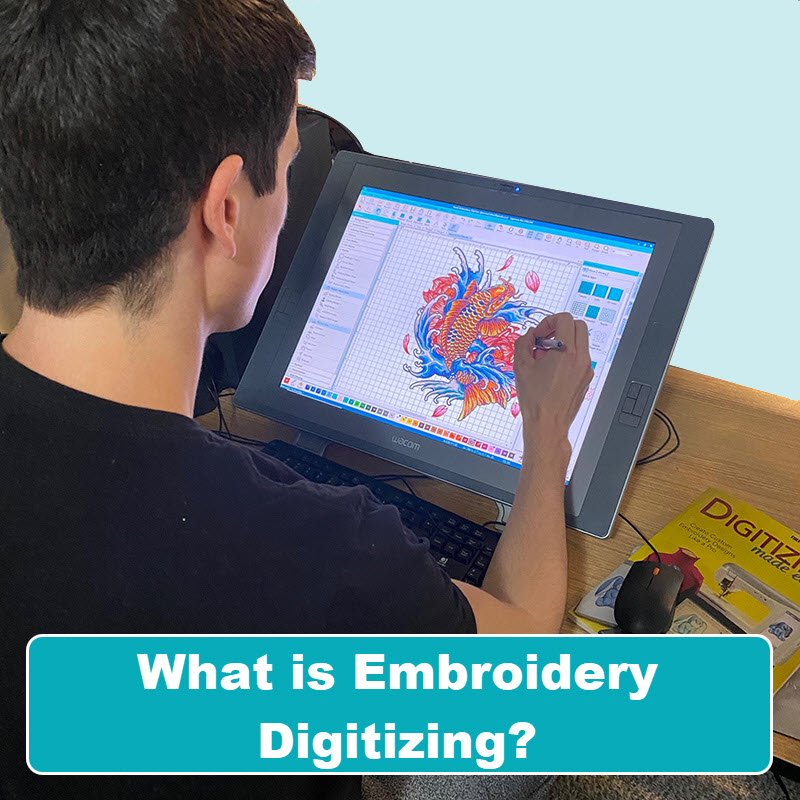Streamlining the Art of Needlework Digitizing: Step-by-Step Overview
Needlework digitizing is a precise craft that demands precision and creative thinking. As technology continues to advance, the digitization process has ended up being a lot more accessible, permitting lovers to bring their complex styles to life easily. In this overview, we will certainly untangle the complexities of embroidery digitizing, damaging down each step methodically to streamline the procedure and equip both beginners and seasoned embroiderers alike. Keep tuned to uncover exactly how you can simplify this intricate art kind and change your innovative visions into magnificently stitched work of arts.
Understanding Needlework Digitizing Software
Needlework digitizing software acts as a vital tool for changing intricate styles right into digital layouts compatible with needlework devices, facilitating precise stitching and customization. This customized software application enables users to import different picture data layouts, such as JPG or PNG, and transform them into embroidery machine-readable formats like DST, EXP, or PES - Digitizing for Embroidery. By using functions like stitch editing, underlay choices, and thread color choice, digitizing software allows users to manage every element of the layout procedure
Additionally, progressed embroidery digitizing software program provides devices for developing complicated layouts, changing stitch density, and integrating complex details. Customers can likewise preview the design prior to sewing it out, making certain precision and decreasing mistakes. Additionally, many software application programs supply automated attributes that aid simplify the digitizing process, saving time and effort.
Comprehending the capabilities of embroidery digitizing software program is necessary for achieving high-grade results in embroidery tasks. By understanding this device, embroidery fanatics and specialists can release their imagination and bring elaborate styles to life with precision and effectiveness.

Selecting the Right Layout Data
After familiarizing yourself with the abilities of embroidery digitizing software application, the next vital step in the process is picking the best style declare your task. Digitizing for Embroidery. When selecting a design file for needlework digitizing, it's essential to think about the intricacy of the design, the size of the last item, and the type of textile you will certainly be working with
For elaborate designs with great information, a high-resolution photo or vector data is advised to ensure that the needlework equipment can properly duplicate the layout. Furthermore, the dimension of the last product plays a significant duty in picking the right style documents. Bigger layouts might need higher resolution data to keep clearness and intensity.
Additionally, the sort of textile you will certainly be embroidering on affects the choice of design data. Different materials might require adjustments in the design file to ensure that the stitches are properly lined up and the style looks like meant. By very carefully picking the ideal design file based on these variables, you can establish yourself up for an effective needlework digitizing procedure.
Digitizing Devices and Methods
Using specialized software and precision methods, digitizing devices are vital in transforming intricate designs right into embroidery-ready documents. Needlework digitizing software, such as Wilcom, Hatch, or Embrilliance, provides the essential system to convert art work right into stitch information. These programs provide features like stitch modifying, underlay choices, and text tools to make sure the layout converts seamlessly onto fabric.
Among the key techniques in digitizing is creating a clear course for the needlework equipment to follow. This involves digitizing each element of the style with precision, identifying stitch types, densities, and instructions. By utilizing devices like digitizing tablet computers or software-specific plugins, embroiderers can accomplish a high level of accuracy in their digitized designs.
Moreover, grasping the art of rug stitching is vital for creating high quality needlework. Underlay sewing supports the material and produces a foundation for the design, making sure that see here the final product is both visually enticing and long-lasting. By understanding these digitizing tools and techniques, embroiderers can raise their craft and bring detailed layouts to life with precision and performance.
Customizing Stitch Types and Directions
The selection of stitch kinds can significantly affect the total look and texture of the embroidered layout. By strategically incorporating these stitch kinds, embroiderers can attain depth and click here now measurement in their layouts.
Additionally, the instructions of stitches plays a critical role in boosting the visual charm of the last embroidery. Diverse stitch instructions can include texture, emphasize specific elements, and develop aesthetic rate of interest. Changing the angle of stitches can imitate movement or natural patterns like fur or plumes. By trying out with different stitch angles and patterns, embroiderers can bring their styles to life with remarkable information and details. Grasping the art of tailoring stitch types and directions encourages embroiderers to unleash their imagination and boost the quality of their work.
Testing and Refining Your Digitized Layout
To guarantee the precision and high quality of your digitized style, complete testing and refinement are necessary action in the embroidery digitizing procedure. Once you have actually completed the digitization of your layout, it is vital to evaluate it prior to proceeding with the real needlework. Examining allows you to determine any kind of potential concerns such as string breaks, stitch density troubles, or design distortions that may impact the result.

After screening, it is necessary to refine your digitized layout based upon the responses from the examination sew-out. This may involve tweaking stitch setups, Learn More readjusting thickness, or making modifications to the overall design to attain the wanted end result. By repeating via screening and refinement, you can tweak your digitized style to excellence before moving ahead with the real needlework process.
Conclusion
In final thought, mastering the art of needlework digitizing needs a thorough understanding of the software program, choosing the right layout file, making use of digitizing devices and techniques, tailoring stitch types and instructions, and screening and improving the digitized layout. By adhering to these steps, embroiderers can simplify the digitizing process and create high-grade stitched designs with precision and performance.